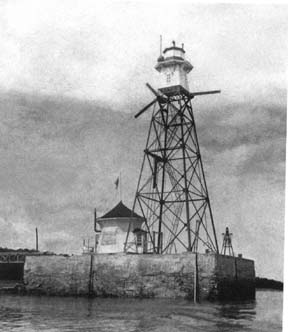
|
Spectrum Management - From the Early Years to the 1990s |
|
Page 01 of 26 Introduction |
|
From Semaphore to Satellite Canadian Radio Frequency Spectrum Management Through the Years
Prepared for the Regional Office, Spectrum Management Industry Canada - Montreal Laval Desbiens, May 2003
Signal Station noun
1. A place on shore from which signals are made to ships at sea. (International Hydrographic Dictionary)
No-one is really sure when humans began to use such signals, but drums and other noise-making devices, as well as smoke signals, were without question the first means of long-range communication.
In the 1700s, an admiral in the British Navy invented a way for ships to communicate by using flags.
In Europe, historic sites illustrate the use of signal stations and semaphore for communicating between fixed points. In this country, the photo on the left shows a telegraph at Ile-aux-Grues in the St-Lawrence river, used to advise mariners on the water depth .
Electricity was invented later on and led to communication via wire. Samuel B. Morse proposed the Morse code in 1838.
This was followed by land telegraphy, Morse telegraphy, telephony, radio telegraphy, radio telephony, broadcasting, television, citizen's band radio (or CB radio, General Radio Service or citizen band), radio guidance, radar, cellular telephone, electronic messaging, electronic mail, electronic directories, radio probes and communication satellites, and a wide range of other applications and tools that would not be possible without the radio frequency spectrum.
Here are some of the milestones in radio frequency spectrum management in Canada !
|
|
Spectrum Management - From the Early Years to the 1990s |






